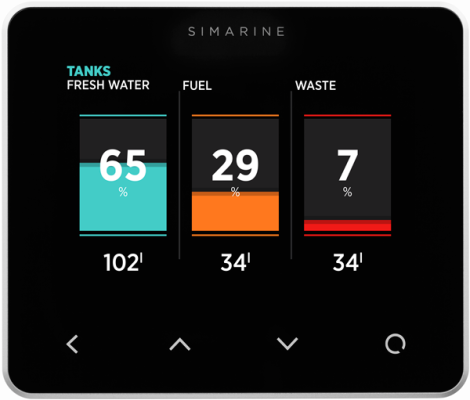garmstro55
Senior Member
One of the weekend projects was to install a battery monitor on the house battery. We want to anchor out more often and I wanted to get a better handle on the state of charge.
The gauge fits nicely to the left of the fridge just above the fresh water tank monitor. It needs a 53mm hole (approx 2-1/16") so since Lowes doesn't have the metric hole saws I went with a 2" hole and used a dremel and a rasp to make it big enough.
The Balmar comes with a shunt (which I mounted to the aft bulkhead near the batteries) that has two threaded studs on it. My battery cable terminal uses a post, so I found in the marine store a "screw-on" post that is designed to convert a threaded battery terminal to a post. I screwed this on the shunt and wrestled the negative battery cable to connect to it.
A short, 12 inch, black cable with ring terminals was used to connect from the other side of the shunt to a bolt-on battery terminal with a screw post.
Running the included cable to the back of the gauge was a piece of cake, once I pulled out the fridge to get access.
Powered everything up and now I can see if the battery is charging, discharging and how long until the battery will need to be charged by running the generator. Took about 4 hours all together, including several trips to the store. Very happy with the installation.
The gauge fits nicely to the left of the fridge just above the fresh water tank monitor. It needs a 53mm hole (approx 2-1/16") so since Lowes doesn't have the metric hole saws I went with a 2" hole and used a dremel and a rasp to make it big enough.
The Balmar comes with a shunt (which I mounted to the aft bulkhead near the batteries) that has two threaded studs on it. My battery cable terminal uses a post, so I found in the marine store a "screw-on" post that is designed to convert a threaded battery terminal to a post. I screwed this on the shunt and wrestled the negative battery cable to connect to it.
A short, 12 inch, black cable with ring terminals was used to connect from the other side of the shunt to a bolt-on battery terminal with a screw post.
Running the included cable to the back of the gauge was a piece of cake, once I pulled out the fridge to get access.
Powered everything up and now I can see if the battery is charging, discharging and how long until the battery will need to be charged by running the generator. Took about 4 hours all together, including several trips to the store. Very happy with the installation.







